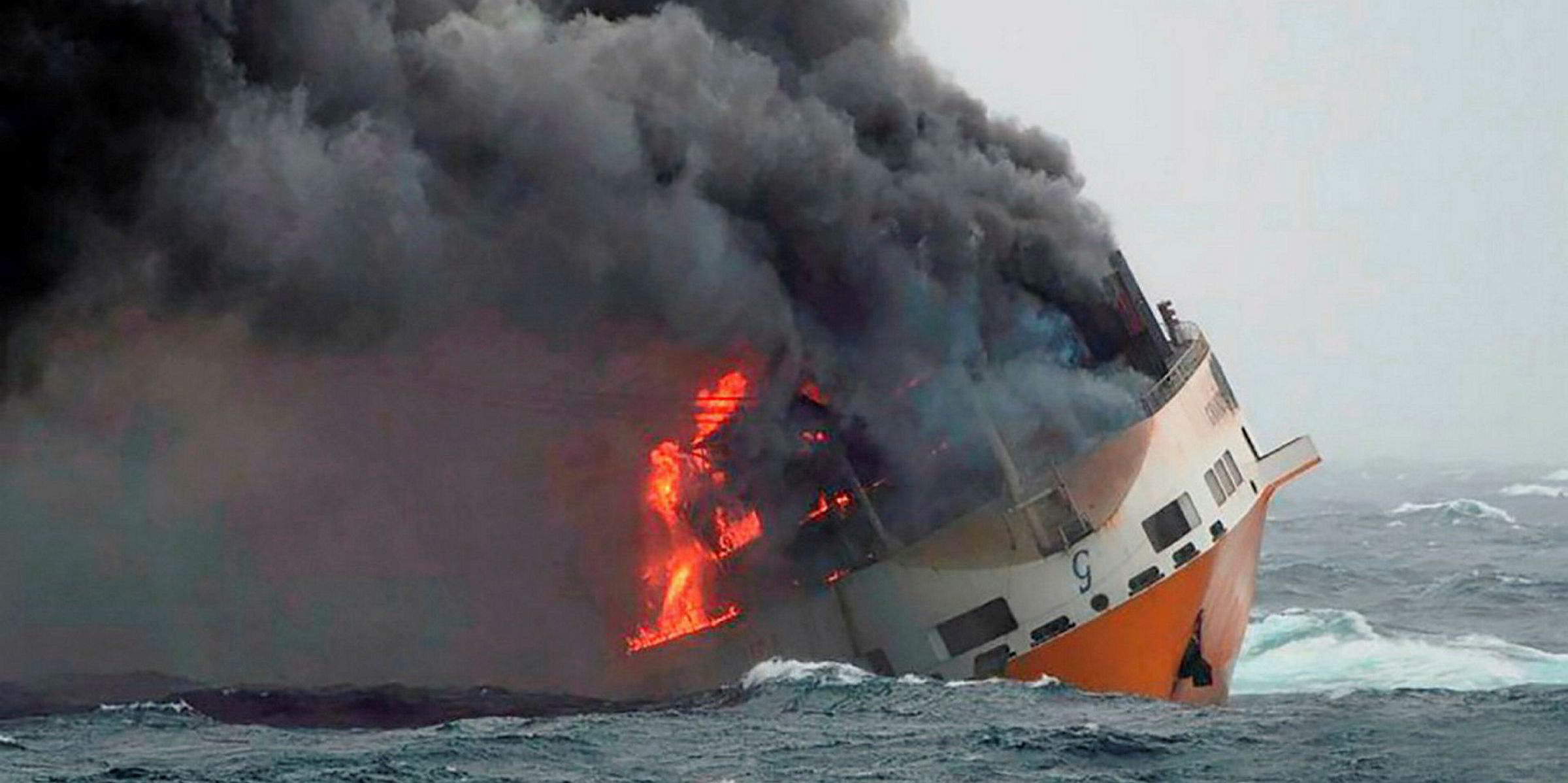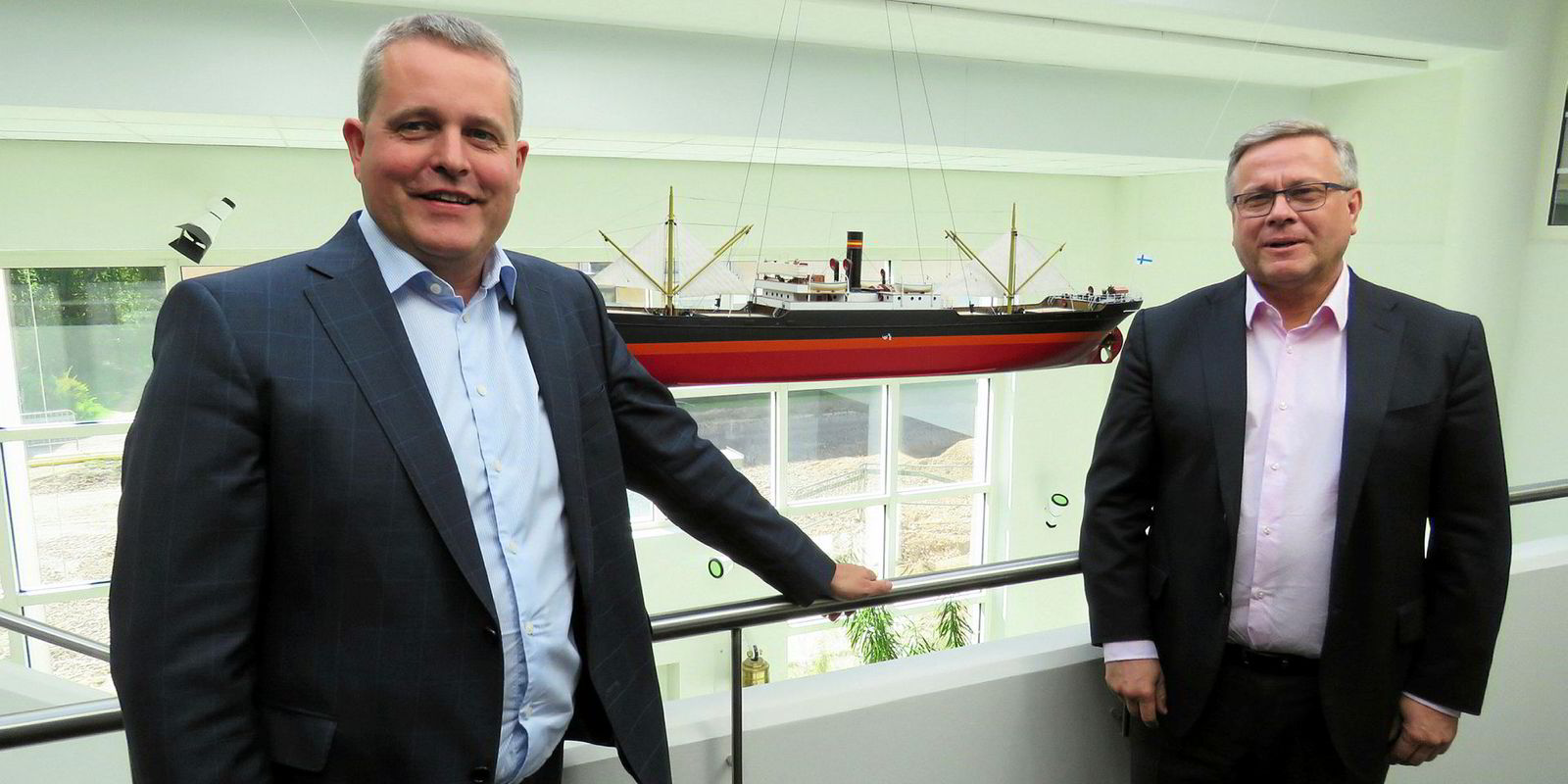Figures from the Nordic Association of Marine Insurers (Cefor) indicate three years of low loss levels have come to an abrupt end with one particularly costly incident recorded in the first half of this year.
The Oslo-based association said an increase in cargo-related fires and explosions on vessels is causing concern.
Cefor’s figures for the half-year to June show there have been seven losses recorded in excess of $10m each so far in 2019.
$50m claim
The association said one of these losses is costing insurers more than $50m, which would be the most costly loss since the cruiseship Costa Concordia in 2012.
Cefor did not name this year's costly casualty.
However, the Grimaldi Group-owned, 57,000-gt ro-ro Grande America (built 2007), which sank off the coast of France in March this year after an explosion and fire originating in its containerised cargo, seems to be typical of the high-cost claims that Cefor referenced.
Among the ship’s hull insurers were Cefor members the Norwegian Hull Club and Gard.
The upturn in losses this year comes after three years with comparatively few cases between 2016 and 2018.
Cefor said the higher figure in the first half indicated that loss levels are “turning back to normal”. The claims frequency has returned to the longer-term trend of about 22%, Cefor said.
Cefor added that the high-cost losses this year have also driven up the claims cost per vessel to historic average levels.
“This indicates that the recent trend of benign major claims may be broken,” Cefor said.
Rise in fires
Cefor has also picked up on the recent increase in cargo-related containership fires and explosions. Fire and explosion related claims of more than $1,000 have shown the largest percentage increase in the years between 2016 and 2019 among all claims types.
Marine insurers are increasingly concerned about fires on container vessels, especially those starting in containers onboard.
Cefor
Cefor said there had been a “surge” in fires in the first quarter of 2019, particularly on ultra-large containerships of over 100,000 gt. It said cargo-related fires are proving the most costly for insurers and cited misdeclaration of hazardous cargoes as a major cause.
“Marine insurers are increasingly concerned about fires on container vessels, especially those starting in containers onboard. Contrary to fires in the engine room, those starting in the cargo area of a container vessel have proven difficult to detect and extinguish,” Cefor said.
“The location of the fire may be difficult to reach and the firefighting capabilities on deck are restricted and often insufficient to stop the fire spreading and causing a serious threat to crew and more severe damage to cargo and the vessel itself.”
Cefor has also highlighted that the insured value of vessels is continuing to fall, although at a slower rate. The average insured value of vessels has fallen a further 4.1% at the 2019 renewals. Although it is higher than the 3.2% drop recorded in 2018, Cefor said that the decrease in insured values is generally slowing down.
Insured values have been on the decline since the 2018 market crash that prompted a collapse in ship values and brought an end to the newbuilding rush and renewal of the world fleet. Generally, values drop when the world fleet ages.





